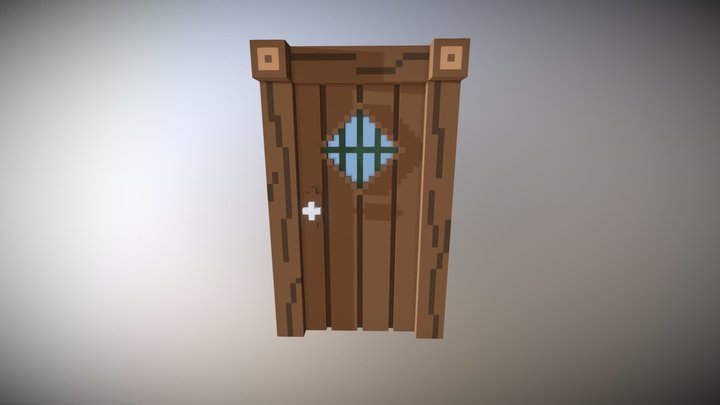
The Engine requires basic math (mostly linear algebra for graphics and calculus for physics and rendering algorithms), knowledge of a to-be-selected programming language, basic computer graphics and game engine architecture knowledge, and experience with Vulkan. These topics are all technical; Professional artists are not required because all game assets can be modeled with a voxel editor, which is considerably easier than the modeling performed using general 3D graphics software like Blender and Maya. In fact, asset modeling using voxel editors often requires no artistic abilities whatsoever, because the items themselves are very minimal. Take this example:

The door on the left requires the use of a general 3D modeling software, which requires a professional to create quickly. The door on the right requires the use of a voxel editor, which can be used by anyone (even the players themselves!).
Teardown's engine was made by one developer in about three years. The maps and items were made by another individual in much less time. The Engine will have many similarities to Teardown's engine, but will be built from the ground up to support on-the-fly environment generation and crafting, multiplayer, and a few generative mechanics like electrical and mechanical engineering. Therefore, the engine can be built in a similar time frame, although will take longer because of the following factors:
The Steam storefront has no barrier to entry, so the majority of indie games released to Steam are low-skill, low-effort, or derivative, so overall indie statistics are not a good predictor of the revenue. Although it offers a much smaller sample size (n=1), a better metric would be Teardown, which is really the only game of its kind (Gustafsson's engine is novel and proprietary). Teardown made very little advertising effort. Development updates were shared on twitter @tuxedolabs (I don't know how many followers he had before Teardown, he now has 80k as of 2020). Some medium-sized YouTubers, including 2kliksphilip and BlueDrake42 realized the potential of the game, and made some videos about it. Then, a week after its release, it acquired about 6000 reviews on the Steam storefront. To my knowledge, the vast majority (if not all) of these reviews were from those who purchased the game (didn’t get it for free), which sold for $20. Purchase to review ratios on the Steam store usually range from about 20 to over 100, the average being around 60. Given a conservative purchase to review rate of 20, and a 30% revenue cut from the Steam store, the estimated revenue is around 1,680,000 one week after release. (update 08/05/2021: Teardown now has over 20k reviews, implying a revenue of around $8 million). Teardown's gameplay is very limited; it mainly consists of destroying the environment with various tools and driving vehicles. There are very few emergent mechanics (building and crafting are nonexistant) and the gameplay loop is very repetitive (plan a path and collect the items before the time runs out). Forum chatter seems to confirm the eventual banality of continual gameplay. A more comprehensive open-world sandbox or story-driven/goal-driven game (including action such as combat) would likely generate far more sales. This sandbox voxel game genre is in high demand and low supply; all existing games in the genre have their own respective set of features and trade-offs, and only one has a wonderful raytraced mini-voxel renderer. Our engine will utilize the latest advancements in graphics hardware (especially GPUs) and software to take a minimal-compromise approach, yielding a feature set that any fan of the voxel genre (or any player of Minecraft who wants an “upgraded” experience) would likely purchase (as long as they have a beefy enough PC).